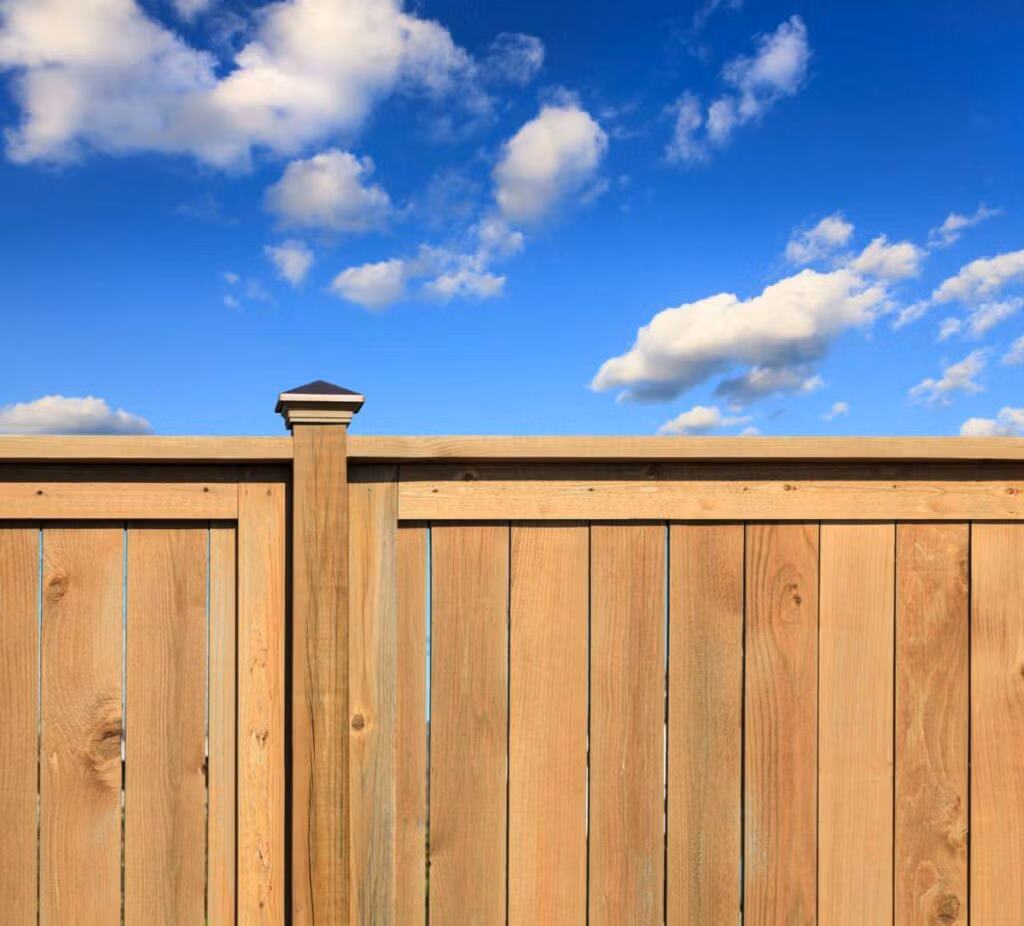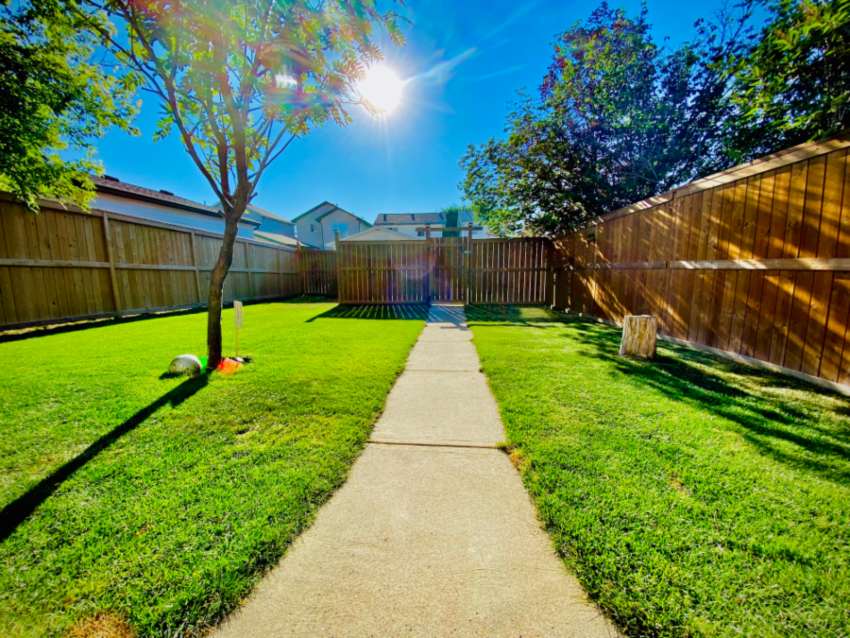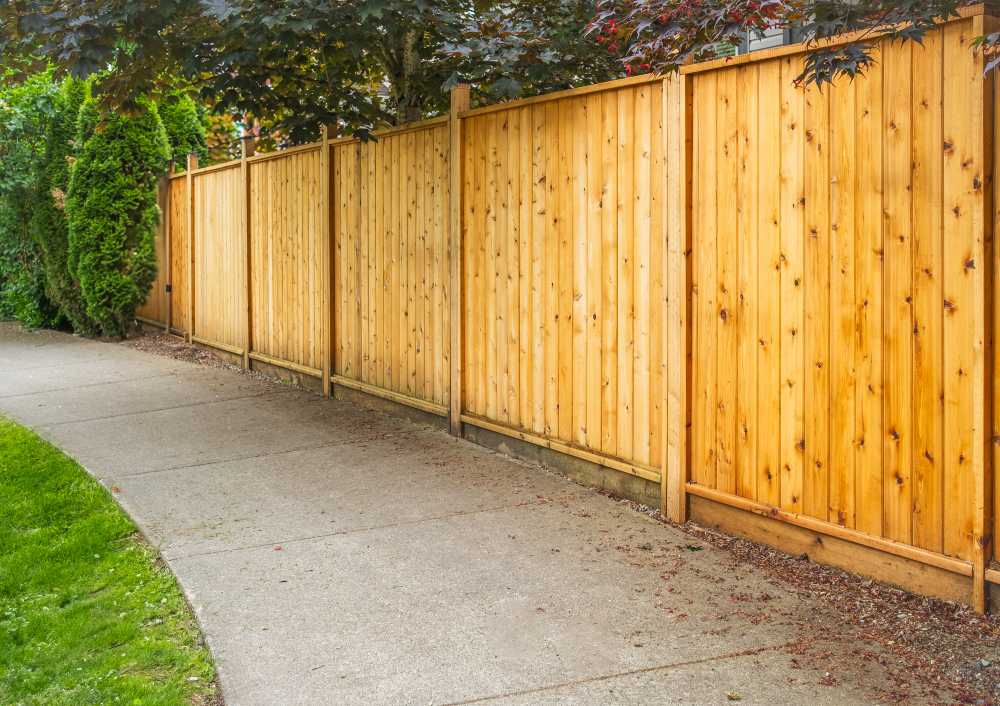-
How Long Does a Cedar Fence Last?
Cedar fences are constructed from beautiful cedar wood. While cedar is naturally resistant to wood rot, decay, and insects, your fence will still require care and maintenance. Regular cleaning, sealing, staining, and damage repair can help extend the lifespan of your fence. Before you invest in cedar fence installation for your home, you might be wondering how long does a cedar fence last, or how long will an untreated cedar fence last? Keep reading to learn more about the average lifespan of cedar fencing, how to properly care for your cedar fence, and tips for preserving the beauty and longevity of your fence.

Average Cedar Fence Lifespan
An untreated or unstained cedar fence can last between 15-20 years in mild temperatures and climates. A cedar fence that has been treated with a protective sealant or stain can last 30 years or more. The lifespan of your fence depends on several factors, including the weather and climate in your region, pest activity in the area, the installation method and location, the amount of wear and tear it experiences, and the level of care it receives.
Factors That Affect the Lifespan of Your Cedar Fence
There are many different factors that can shorten or lengthen the lifespan of your fence. Understanding these factors can help you better care for and protect your fencing from damage:
- Wood Quality – One of the biggest factors that influences your fence’s lifespan is the quality of the wood that is used to build it. A high-quality cedar will be more durable and may last longer if it is properly cared for.
- Location and Installation – Whether you hired a professional for fence installation will also affect its lifespan. If it is installed correctly, it can better withstand weather and wear and tear. Its installation location will also play a role. If it is installed near a body of water, an area with thick vegetation, or an area that experiences high traffic or activity from people, animals, or vehicles, it may experience more wear and tear, leading to damage and a shorter lifespan.
- Weather and Climate – The weather and climate in your region can also determine how long your cedar fence lasts. Harsh weather, like heavy rain, snow, hail, and high winds, can cause your fence to deteriorate or get damaged. Extreme heat and cold can also cause the wood to expand and contract regularly, and frequent exposure to moisture can lead to rot, cracks, and warping, especially if your fence is untreated, all of which will shorten its lifespan.
- Wear and Tear – If your fence gets a lot of use, it won’t last as long.
- Pest and Animal Activity – If your fence is installed in an area that sees a lot of animal activity, it is at a greater risk of being damaged. If you have pests in your area that are attracted to cedar wood and your fence is untreated, it could become infested by insects.
- Care and Maintenance – If you don’t properly care for your fence, it will not last as long. Regular care and timely repairs can help your fence last.
How to Properly Care for & Maintain Your Cedar Fence
Even treated or sealed cedar fences require care and maintenance. Here are some tips for keeping your cedar fence clean, protected, and beautiful:
- Regular Cleaning – You should clean your fence after periods of heavy storms, extreme weather, or at the end of each season, depending on the amount of wear and tear it experiences. Brush off dirt and debris with a brush or cloth. Clean the fence with a solution of warm water and mild soap. Do not use harsh chemicals, abrasive cleaners, or rough cleaning tools. Use a hose or soft sprayer to wet the fence and then a brush or cloth to apply the cleaner. Rinse the fence when done, and let it dry completely.
- Sealing and Staining – Your fence should be re-sealed or re-stained every two years, or more often if you live in an area that frequently experiences extreme weather.
- Inspections and Repairs – Regularly inspect your fence for signs of damage, including missing hardware, cracks, split boards, wood rot, loose boards, and other issues. Make repairs right away, as the damage will only get worse over time.
Tips for Protecting Your Cedar Fence From Damage
There are other steps you can take to protect your cedar fence from damage. These measures can preserve the natural beauty of your fence and lessen wear and tear:
- Don’t let sprinklers or other irrigation systems spray your fence directly
- Protect your fence from water and moisture
- Keep plants, trees, shrubs, and other vegetation trimmed so that it doesn’t grow over your fence
- Treat your fence with a sealant or stain to protect it from pests, water, mold and mildew, and rot
- Take care when using mowers, equipment, or vehicles around your fence
- Do not sit on the fence, lean heavy items against it, or hang heavy items from it
Get an Estimate for Cedar Fence Installation
Dick’s Evergreen Fence and Deck specializes in high-quality fence installation. We have more than 40 years of experience in the fencing and decking industry. Our cedar fencing is made from real cedar wood that is durable, beautiful, and strong. We can help you design a custom fence for your home or business and ensure it is installed professionally for maximum durability, protection, and lifespan. Call now or contact us online to schedule a consultation and learn more about cedar fencing installation in the Portland, OR, area.
-
Cedar Fence Ideas for Your Yard
Exploring Popular Cedar Fence Ideas for Your Yard
Cedar is a beautiful natural wood material for fencing. It is durable, attractive, and can complement any architectural design or home aesthetics. It is naturally resistant to decay and insects, and while it does require regular care and maintenance, it can last longer than other wood species. It is also one of the most affordable types of wood to use for fencing. If you’re considering a cedar fence for your home, keep reading to explore popular cedar fence ideas.

Traditional Picket Fence
Picket fencing is one of the most classic and popular cedar fence styles. It is elegant and timeless and can complement any home’s architectural style. Picket fencing is low and decorative and consists of vertical slats that are attached to horizontal rails and larger, heavier vertical posts that anchor the fence into the ground. The vertical slats may be pointed at the top or have some other decorative element that makes the fence stand out. Picket fences are mostly used to identify property lines rather than enhance the security or privacy of a home. They are easy to climb over, and small children and pets may be able to fit through the slats. However, they don’t obstruct your home’s view.
Cedar Privacy Wall or Fence
A cedar privacy wall or fence can make your home more comfortable and secure. This type of fencing is ideal for people who live in busy urban areas or high-crime neighborhoods who want to block out the sights and sounds so that their outdoor living spaces are more peaceful. Privacy fencing is also much harder to climb over and may deter prowlers or criminals. If you’re concerned about the appearance of your privacy fence, you can add decorative elements that make it look more attractive.
Horizontal Cedar Fence Design
Horizontal cedar fences are constructed from wide horizontal planks connected to thinner upright posts. The posts can also be cedar or can be made from galvanized steel, aluminum, or vinyl. Horizontal fencing is more secure if you have kids or pets and also offers much more privacy than picket fencing. They can also complement any architectural style and are versatile in size, shape, and design.
Split Rail Cedar Fence
A split rail cedar fence is the perfect choice for a Ranch-style home, Craftsman home, or bungalow. It is constructed from rustic, rough-hewn horizontal cedar beams that are attached to thick wood posts. You can make your fencing more secure by adding chicken wire or mesh between the horizontal slats. Split rail fencing is open and doesn’t offer as much privacy and security as a privacy fence or horizontal fencing. It is best used for marking property lines or creating designated areas in your outdoor living space.
Decorative Cedar Fencing
Decorative cedar fences include specialty elements or decorative features. The most popular options are fence toppers like lattice panels, finials or spikes, solid panels, and decorative metal elements. Decorative fencing may also be constructed in a unique design, like arches or decorative panels. It may also include ornate or elaborate post caps or intricate metal work. Decorative fencing can also be practical and utilitarian, depending on its design and construction. It can offer privacy and security and deter prowlers.
Hybrid Cedar Fence
A hybrid cedar fence combines two or more fencing materials and/or design styles. For instance, you might want a horizontal fence with decorative metal work on the top or a split rail fence with mesh barriers between the rails to keep animals contained. A hybrid fence could also combine cedar planks with galvanized steel or pressure-treated wood posts for added visual interest and durability.
Schedule a Consultation for Cedar Fence Installation
If you’re ready to start designing a cedar fence for your home, our team at Dick’s Evergreen Fence and Deck can help. We have more than 40 years of experience in the fencing and decking industry. Our expert installers can help you choose the right fencing material, size, and design for your budget and aesthetic preferences. We specialize in privacy fencing, decorative fencing, picket fencing, and more. Call now or contact us online to schedule a consultation for cedar fence installation in the Portland, OR, area.
-
How to Maintain a Cedar Fence
How to Maintain a Cedar Fence
Although cedar fences are naturally resistant to insects and decay, your fence still requires regular care and maintenance. Do you need some tips on how to maintain a cedar fence? It’s best to inspect your fence seasonally and after major storms or periods of extreme weather. You should also reseal or re-stain your fence every two to three years or as soon as you notice signs of wear and tear. Properly maintaining your fence can protect its beauty, extend its lifespan, and ensure its stability and durability. Here are some additional tips for proper cedar fence maintenance.

Regularly Inspect Your Fence for Signs of Damage
One of the most important parts of cedar fence care is to regularly inspect it. If you catch early warning signs of problems, you can treat them sooner and reduce the risk of major damage. You should inspect your fence seasonally, in the summer, spring, winter, and fall. You should also check it after periods of heavy rain, snow, wind, heat, cold, ice, and humidity. Look for warning signs that you need fence repair or that you need to apply fence stain or sealant, including:
- Leaning or sagging
- Loose or missing hardware
- Broken or missing fence boards
- Wood rot
- Moisture beading up on the surface or signs of moisture intrusion
- Discoloration or fading
- Stains
- Peeling paint or stain
- Signs of pests
- Holes
- Splintering wood
- Warped or curled boards
Clean Your Fence Properly
After inspecting your fence, you should clean it thoroughly. Use a soft brush to remove dirt, debris, and organic matter. Do not use a power washer or abrasive cleaning products or tools. Gently wash with a hose to remove stubborn areas of dirt. Only use cedar fence cleaners and cedar fence treatments that are recommended by your fence installer or the manufacturer of your fence. You can usually just use a mild detergent mixed with warm water to remove stains or debris. If you see signs of mold or mildew, use a mixture of bleach and water to get rid of it.
Stain & Seal Your Fence Every Two or Three Years
You will need to reapply fence stain or sealant every two or three years or if you notice signs of damage or wear and tear. A protective stain or sealant can prevent moisture intrusion, water damage, rot, mold, mildew, sun damage, and pest infestations. Choose a high-quality product from a reputable brand. Apply it evenly with a brush or roller.
Protect Your Fence
There are also several steps you can take to protect your cedar fence and extend its lifespan. Do not allow sprinklers, hoses, or irrigation systems to spray water directly on your fence. Do not use vehicles, equipment, or mowers right next to it. Don’t sit on, lean against, or hang anything heavy from the fence. Protect it from animal and insect activity. Regularly trim weeds, trees, bushes, and other plants so that they don’t grow over or into the structure and damage it.
Address Damage Right Away
If you do notice signs of damage to your fence, you should address them right away. Ignoring them will only give them time to get bigger and more expensive to repair. For major damage, it’s best to hire a professional with experience in cedar fence repair or restoration. If one or more boards are seriously damaged, you should replace them rather than trying to repair them.
Call for Cedar Fence Installation
Dick’s Evergreen Fence and Deck offers professional cedar fence installation throughout the Portland, OR, area. We have 40 years of experience in fencing and decking, and can help you choose the right type of fence for your needs. We exclusively use high-quality cedar that is carefully selected for its beauty and exceptional durability. We also offer cedar decks, pergolas, patio covers, and garden accents. Call us now or contact us online to request an estimate for cedar fencing.
